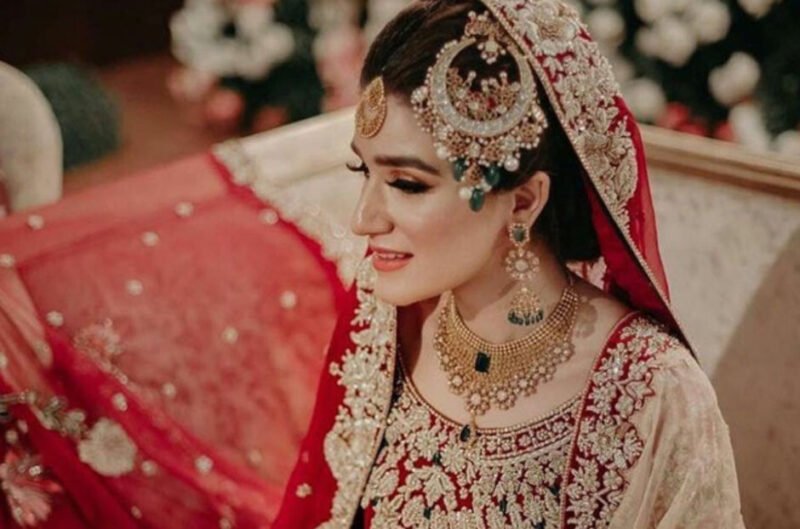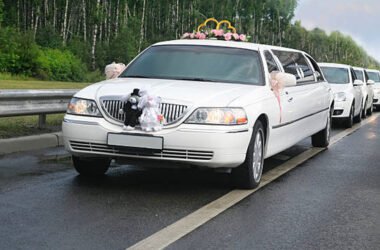Pakistani weddings are memorable events that combine contemporary glitz with heritage in a colourful way. Brides often seek the perfect blend of modern style and traditional elegance. Try these seven stylish suggestions to accomplish this: pick a classic colour scheme, adhere to detailed embroidery, purchase eye-catching jewellery, try layering dupattas, strike a balance between classic cuts and contemporary silhouettes, put comfort first without sacrificing style, and blend in perfectly with the groom’s outfit. These accents enhance your bridal appearance and guarantee self-assurance during the celebrations. Asian wedding clothes UK provide several possibilities for people who are shopping overseas to create a gorgeous bridal wardrobe with ethnic roots.
1. Select a Classic Colour Scheme
The use of colouration is essential in Pakistani weddings. Deep reds, maroons, and golds have traditionally been linked to wedding clothes as symbols of affection, wealth, and sparkling stars have evolved. Current fashions have broadened the palette to include tender pastels, jewel tones, and even ivory tints, although many brides remain treasured those conventional colourations.
Choosing one or timeless colours and combining them with present-day touches is an extremely good approach to strike a balance between the past and the present. For example, you could pick an ivory foundation with golden embroidery or a deep crimson lehenga with pastel red accents.
2. Purchase Detailed Embroidery
Pakistani wedding gowns are highly regarded throughout the world for their beautiful craftsmanship. Every thread, from the sardonic and resham embroidery by hand to the glittering dabka, sequins, and beaded accents, offers the ensemble richness and beauty. It’s crucial to select embroidery that accentuates your frame kind and personal style.
Heavy gildings with complicated designs are best for the primary Barat gown for brides who enjoy a royal class. On the alternative side, elegant threadwork combined with sparse masonry is a superb option if you like elegance with delicacy. Keep in mind that complex embroidery speaks to the legacy, artistry, and cultural diversity that symbolise Pakistani weddings, similarly to improving the splendour of your robe.
3. Try Different Dupatta Styles
A gorgeously designed dupatta completes any Pakistani bridal ensemble. It’s not just a drape of cloth; it frames the bride’s face and gives her a sense of grandeur. Today’s brides try wearing two dupattas at once: a lighter, flowing one draped about the shoulders for elegance, and a lavishly embroidered one draped over the head for traditions. The secret is to find the ideal equilibrium. A sheer dupatta with sporadic decorations enhances the effect of a lavishly embroidered bridal gown.
4. Balance Traditional Cuts with Modern Silhouettes
Lehengas, anarkalis, modern-day gowns, and the conventional gharara and sharara are only a few of the many patterns and shapes of Pakistani wedding ceremony attire. Your bridal look should still be rooted in your way of life, but you can add a few modern-day styling to make it extra fashionable.
For example, you can pair a cutting-edge blouse with deep returned or off-shoulder sleeves with a traditional lehenga. On the other hand, an extended anarkali mixed with modern layering combines the antique and the brand new. The aim is to honour your ancestry whilst making sure your look is present-day, stylish, and displays your individuality.
5. Don’t Undervalue Jewellery’s Power
The focal factor of any Pakistani bride’s ensemble is jewellery. Each piece of jewellery, from chokers, lengthy necklaces, bangles, and anklets to jhoomars (headpieces) and matha Pattis, adds significance and splendour. The appropriate jewellery represents cultural satisfaction, similarly to enhancing your outfit.
If there is a lot of needlework and detail for your ensemble, choose jewellery that complements rather than overpowers it. For example, an intricate dress looks first-rate with an easy choker and jewellery. However, placing jewellery picks like stacked necklaces or a statement jhoomar can add stability to an otherwise subdued outfit. In order to feature sentimental value whilst maintaining tradition, numerous brides nowadays put on ancestral jewellery that has been passed down from their mothers or grandmothers.
6. Put Comfort First Without Sacrificing Style
Weddings in Pakistan are commonly prolonged and indulgent, lasting several hours in keeping with the day. As a bride, you’ll be expected to greet masses of guests, take part in several occasions, and be filmed nonstop. Although keeping a remarkable appearance is critical, comfort must never be compromised.
Select fabrics with air flow that facilitate smooth motion, together with organza, silk, or chiffon. Make sure your kameez or blouse fits properly, neither too tight nor too loose. Since you may be standing and taking walks for hours on end, shoes should also blend comfort and fashion. Brides who dismiss comfort regularly get weary or preoccupied, which would possibly impair their preferred happiness and presence.
7. Complement the Groom’s Outfit
Lastly, a bridal ensemble would not be complete without taking the groom’s attire into account. Harmony is the goal of cooperation, not having the same colour. The groom could have a matching cream sherwani with delicate crimson embellishments if your lehenga is deep red with gold work. Similarly, men in subdued ivory or beige hues look great with pastel brides.
This careful planning improves photos, gives the wedding a unified look, and represents solidarity. It demonstrates attention to detail and guarantees that on their big day, the bride and groom will stand out as a wonderfully matched couple. Asian wedding dresses UK offer a range of matching choices for brides planning nuptials overseas, guaranteeing that both spouses look their best.
Final Words:
Beyond only attire, a Pakistani bride’s style reflects her culture, history, and individual preferences. Every bride can create a look that is sophisticated, significant, and indelible by adhering to these seven stylish tips: picking a classic colour scheme, spending money on embroidery, experimenting with dupatta styling, striking a balance between traditional cuts and contemporary silhouettes, selecting the appropriate jewellery, putting comfort first, and working with the groom.









